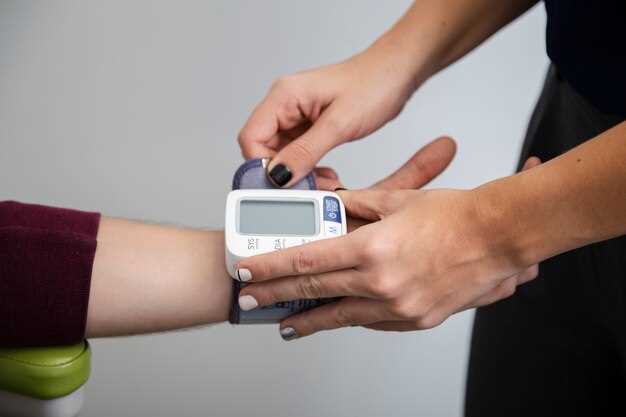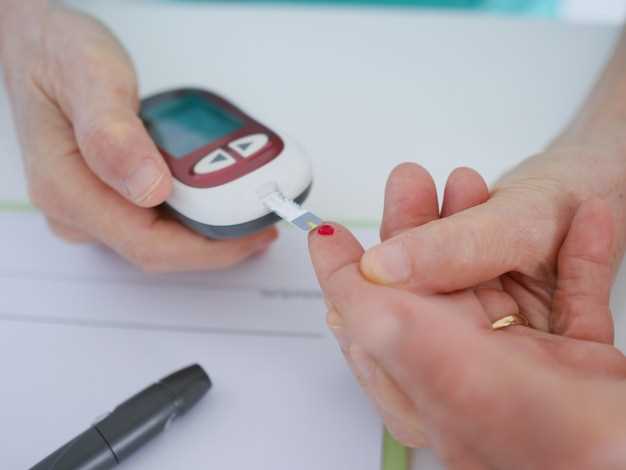
Are you struggling with diabetes mellitus hyperglycemia? Don’t let this condition control your life any longer. Introducing Seroquel – a revolutionary treatment that targets the root cause of diabetes and helps you regain control over your health.
Take back control of your life with Seroquel. Our breakthrough formula is specially designed to stabilize your blood sugar levels and reduce the risk of hyperglycemia episodes. Say goodbye to constant sugar level fluctuations and hello to a healthier, more balanced lifestyle.
Seroquel offers you:
- Effective management of diabetes mellitus hyperglycemia
- Stabilization of blood sugar levels
- Reduced risk of hyperglycemia episodes
- Improved overall health and well-being
Don’t let diabetes mellitus hyperglycemia take control of your life. Trust Seroquel to provide you with the relief and support you need to live a healthier, happier life. Take the first step towards a new beginning today!
Seroquel Diabetes Mellitus Hyperglycemia
Diabetes mellitus is a chronic condition characterized by high blood sugar levels. It can lead to various complications and requires ongoing management. Seroquel, an antipsychotic medication, has been associated with the development of hyperglycemia, a condition marked by elevated blood glucose levels. Therefore, it is important to understand how Seroquel can affect diabetes mellitus and how it can be used as a treatment option.
Understanding Seroquel’s Impact on Diabetes Mellitus
Seroquel works by affecting certain chemicals in the brain, which can result in increased blood glucose levels in some individuals. This can be particularly problematic for people with diabetes mellitus, as it can lead to uncontrolled hyperglycemia.
It is crucial for individuals with diabetes who are prescribed Seroquel to monitor their blood glucose levels regularly. This can help identify any potential increases in blood sugar and allow for timely adjustments to their diabetes management plan.
Treating Diabetes Mellitus with Seroquel

Seroquel is primarily used to treat mental health conditions such as schizophrenia and bipolar disorder. However, in some cases, it may be prescribed for individuals with diabetes mellitus who also experience psychiatric symptoms.
When using Seroquel as a treatment for diabetes, it is important to closely monitor blood sugar levels and work closely with a healthcare professional. Adjustments to the diabetes management plan, such as medication dosages or lifestyle changes, may be necessary to maintain optimal blood glucose control.
Note: Seroquel should only be used as part of a comprehensive treatment plan for diabetes mellitus. It should not be used as a standalone treatment without proper medical supervision.
It is essential to consult with a healthcare professional before starting or changing any medications, including Seroquel. They can provide personalized guidance based on individual health needs and considerations.
Treating Diabetes Mellitus with Seroquel
When it comes to managing diabetes mellitus, it is essential to explore all available treatment options. Seroquel, a medication commonly prescribed for mental health conditions, has also shown potential in managing diabetes mellitus.
Seroquel works by affecting certain chemicals in the brain, which can help regulate blood sugar levels. This can be beneficial for individuals with diabetes mellitus, as it may help stabilize their glucose levels and mitigate the risk of hyperglycemia.
| Risk Factors | Action |
| Obesity | Discuss with your doctor the potential benefits and risks of Seroquel for your diabetes management. They can offer guidance on adjusting your medication regimen and provide lifestyle recommendations. |
| Family history of diabetes | It is crucial to inform your doctor about your family history of diabetes when discussing Seroquel as a potential treatment option. They can evaluate your individual risk and determine if Seroquel is suitable for you. |
| Poor diet and sedentary lifestyle | Alongside Seroquel, adopting a healthy diet and engaging in regular physical activity are essential for managing diabetes mellitus. Your doctor can provide guidance on making lifestyle changes that complement Seroquel treatment. |
Remember, Seroquel should only be used as part of a comprehensive diabetes management plan prescribed by a healthcare professional. Regular monitoring of your blood glucose levels and close communication with your doctor are crucial for successful management.
Consult your doctor to discuss the potential benefits and suitability of incorporating Seroquel into your diabetes mellitus treatment plan.
Seroquel and Hyperglycemia Risk Factors
When it comes to using Seroquel (quetiapine) for the treatment of conditions like bipolar disorder and schizophrenia, it’s important to be aware of the potential risk factors for developing hyperglycemia, a condition characterized by high blood sugar levels.
Hyperglycemia can occur in individuals who take Seroquel, especially those who have preexisting risk factors. It’s essential to monitor blood glucose levels regularly to detect any changes and prevent complications.
The following are some of the risk factors that may increase the likelihood of developing hyperglycemia while taking Seroquel:
| Risk Factors | Description |
|---|---|
| Obesity | Being significantly overweight can increase the risk of developing hyperglycemia. |
| Family history of diabetes | If you have a family history of diabetes, you may be more susceptible to developing hyperglycemia while taking Seroquel. |
| Personal history of diabetes | If you have a history of diabetes, you may be at a higher risk for developing hyperglycemia while on Seroquel. |
| Advanced age | As you age, the risk of developing hyperglycemia increases. |
| Use of other medications | Certain medications, such as corticosteroids, can increase the risk of hyperglycemia when taken with Seroquel. |
| Poor diet and lack of exercise | Unhealthy lifestyle choices can contribute to the development of hyperglycemia while on Seroquel. |
It’s important to discuss these risk factors with your healthcare provider before starting Seroquel. They can help monitor your blood glucose levels and make adjustments to your treatment plan if necessary.
Remember, early detection and management of hyperglycemia can help prevent serious complications. If you experience symptoms such as increased thirst, frequent urination, or unexplained weight loss while taking Seroquel, consult your doctor right away.
Monitoring Blood Glucose Levels on Seroquel

Hyperglycemia, or high blood sugar levels, can be a concern for individuals taking Seroquel. It is important to regularly monitor your blood glucose levels to ensure they are within the target range and to detect any potential hyperglycemia early.
A simple and effective way to monitor blood glucose levels is by using a blood glucose meter. This device measures the amount of glucose in a small drop of blood obtained through a finger prick.
To monitor your blood glucose levels effectively, follow these steps:
| Step | Description |
|---|---|
| 1 | Wash your hands thoroughly with soap and warm water. |
| 2 | Prepare your blood glucose meter by inserting a test strip into the device as instructed by the manufacturer. |
| 3 | Use the lancet provided with your blood glucose meter to prick the side of your fingertip gently. |
| 4 | Apply a small drop of blood to the test strip inserted in the meter. |
| 5 | Wait for the meter to display your blood glucose level. Note the result. |
| 6 | Record your blood glucose level in a journal or using a smartphone app to track your readings over time. |
| 7 | Discuss your blood glucose levels with your healthcare provider during regular check-ups or as advised by the prescribing physician. |
By monitoring your blood glucose levels regularly, you can work with your healthcare provider to manage hyperglycemia effectively, making any necessary adjustments to your treatment plan. It is important to follow your healthcare provider’s recommendations and guidelines for monitoring blood glucose levels while taking Seroquel.
Managing Hyperglycemia Symptoms with Seroquel
Hyperglycemia, or high blood sugar, can be a side effect of taking Seroquel. If you are experiencing symptoms of hyperglycemia, it is important to manage them effectively while continuing your treatment with Seroquel. Here are some tips:
| 1. Monitor your blood glucose levels regularly: | Check your blood sugar levels frequently to stay aware of any changes. This will help you and your healthcare provider determine if your blood sugar levels are within a healthy range. |
| 2. Follow a healthy diet: | Eat a balanced diet that includes whole grains, lean proteins, fruits, and vegetables. Avoid sugary foods and drinks, as they can cause your blood sugar levels to spike. |
| 3. Engage in regular physical activity: | Exercise can help lower your blood sugar levels. Try to engage in activities such as walking, jogging, or swimming for at least 30 minutes a day, most days of the week. |
| 4. Take medications as prescribed: | Make sure you take your Seroquel as directed by your doctor. It is important not to skip doses or make any changes to your medication regimen without consulting your healthcare provider. |
| 5. Communicate with your healthcare provider: | If you are experiencing any symptoms of hyperglycemia, such as increased thirst, frequent urination, or fatigue, be sure to inform your doctor. They may need to adjust your treatment plan or monitor your blood sugar more closely. |
| 6. Stay hydrated: | Drinking plenty of water can help prevent dehydration, which may worsen hyperglycemia symptoms. Aim to drink at least 8 glasses of water per day. |
Remember, managing hyperglycemia symptoms with Seroquel requires a proactive approach and open communication with your healthcare provider. By following these tips and working closely with your doctor, you can effectively manage your blood sugar levels while continuing your treatment with Seroquel.
Consulting Your Doctor about Seroquel and Diabetes
When considering the use of Seroquel for the treatment of diabetes mellitus, it is important to consult with your doctor first. Your doctor will be able to assess your individual situation and provide you with personalized advice and guidance.
During this consultation, your doctor will review your medical history, including any previous or current conditions, medications, and lifestyle factors. They will also conduct a thorough examination to ensure that Seroquel is suitable for you and discuss the potential risks and benefits.
Your doctor will explain the mechanism of action of Seroquel and how it can help manage diabetes mellitus. They will also provide information on the dosage, duration of treatment, and any potential side effects associated with Seroquel.
Additionally, your doctor will discuss the importance of monitoring your blood glucose levels regularly while taking Seroquel. They may recommend specific testing methods and frequency based on your individual needs.
During the consultation, it is important to share any concerns or questions you may have about Seroquel and its potential impact on your diabetes. Your doctor will address these concerns and provide you with the necessary information to make an informed decision about your treatment plan.
Conclusion
Consulting your doctor about Seroquel and diabetes is crucial to ensure the safe and effective management of your condition. Your doctor is the best resource for personalized advice and guidance regarding Seroquel and its potential effects on diabetes mellitus.
| Key Points | |
|---|---|
| Seroquel | Consult your doctor before starting treatment |
| Medical History | Share any pre-existing conditions or medications |
| Examination | Ensure Seroquel is suitable for you |
| Benefits and Risks | Discuss the potential effects of Seroquel |
| Blood Glucose Monitoring | Regularly monitor your levels while taking Seroquel |
| Address Concerns | Discuss any questions or concerns with your doctor |
